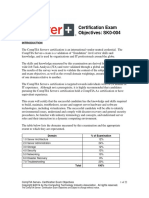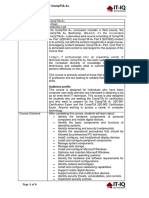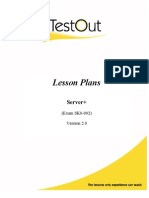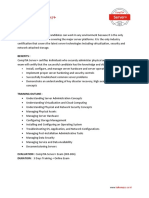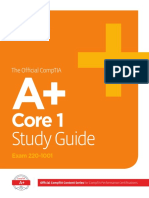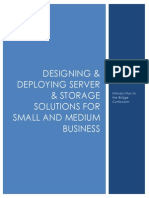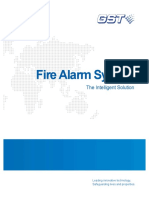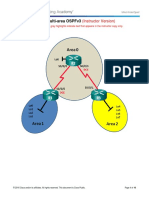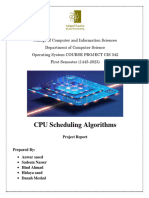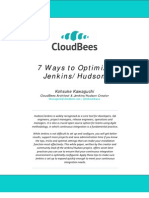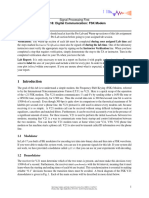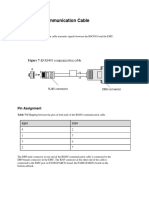COURSE OUTLINE: CompTIA Server+
Course Name CompTIA Server +
Course Duration 5 Days
Course Structure Instructor-Led
Course Overview CompTIA Server+® validates your skills with the most
commonly used server and storage systems in the IT industry.
This certification demonstrates an impressive knowledge
base that narrows the skills gap and provides the hands-on
experience that businesses require.
The CompTIA® Server+® course builds on your existing
professional experience with personal computer hardware
support to present the next tier of skills and concepts that you
will use on the job when administering any type of network
server. If your job duties include server troubleshooting,
installation, or maintenance, or if you are preparing for any
type of network server-related career, it provides the primary
knowledge and skills you will require to be successful.
Lenovo requires Server+ certification for IT professionals
working in their channel partner warranty reimbursement
program. Other companies that recommend or require
Server+ for their IT professionals include Intel, Hewlett
Packard, Dell, IBM and Microsoft.
Audience profile
• This course is designed for IT professionals such
as PC, desktop, and help desk technicians who
have experience supporting PC hardware who
wish to make the transition to become server
hardware and support specialists.
• This course is also designed for existing server
managers who are preparing to take the CompTIA
Server+ Exam SK0-004.
Course Outcome Upon successful completion of this course, you will be
able to perform the following duties of a server
administrator:
• Manage server hardware.
• Install server hardware and operating systems.
• Configure networking hardware and protocols.
• Perform basic server configuration tasks.
• Create a virtual server environment.
• Administer servers.
• Implement server storage solutions.
• Secure the server.
• Plan and test disaster recovery.
• Troubleshoot server issues.
Page 1 of 3
� COURSE OUTLINE: CompTIA Server+
Course Details Lesson 1: Managing Server Hardware
• Topic A: Server Components
• Topic B: Server Power
• Topic C: Server Cooling
• Topic D: Asset Management
Lesson 2: Installing a Server
• Topic A: Prepare an Installation Plan
• Topic B: Prepare the Server Hardware
• Topic C: Set Up the Server Hardware
• Topic D: Install an Operating System
Lesson 3: Configuring Networking
• Topic A: Manage Network Cabling
• Topic B: Configure Network Interface Cards
• Lesson 4: Creating a Virtual Environment
• Topic A: Create Virtual Servers
• Topic B: Create Virtual Switches
Lesson 5: Performing Basic Server Configuration
• Topic A: Configure Local Server Properties
• Topic B: Configure Server Roles
• Topic C: Set Up IP Addressing Service Roles
Lesson 6: Administering the Server
• Topic A: Update the Server
• Topic B: Server Administration Access and
Control Methods
• Topic C: Create Service Level Agreements
• Topic D: Monitor Server Performance
Lesson 7: Implementing Storage Solutions
• Topic A: Perform Capacity Planning
• Topic B: Deploy Primary Storage Devices
• Topic C: Storage Technologies
• Topic D: Configure RAID
Lesson 8: Securing the Server
• Topic A: Configure Firewalls
• Topic B: Configure Security Protocols
• Topic C: Implement Intrusion Detection Systems
• Topic D: Implement Logical Access Control
Methods
Page 2 of 3
�COURSE OUTLINE: CompTIA Server+
• Topic E: Implement Data Security Methods
• Topic F: Apply Server Hardening Techniques
• Topic G: Implement Physical Security
• Topic H: Create Virtual Networks
Lesson 9: Planning and Testing Disaster Recovery
• Topic A: Implement Environmental Controls
• Topic B: Manage Documentation for the Server
and the Network
• Topic C: Create A Disaster Recovery Plan
• Topic D: Perform Backup and Restoration
Lesson 10: Troubleshooting Server Issues
• Topic A: Troubleshoot Theory and Methods
• Topic B: Troubleshoot Hardware Issues
• Topic C: Troubleshoot Software Issues
• Topic D: Troubleshoot Networking Issues
• Topic E: Troubleshoot Storage Issues
• Topic F: Troubleshoot Security Issues
• Topic A: Implement the SDLC
• Topic B: Prepare the Infrastructure
Page 3 of 3

